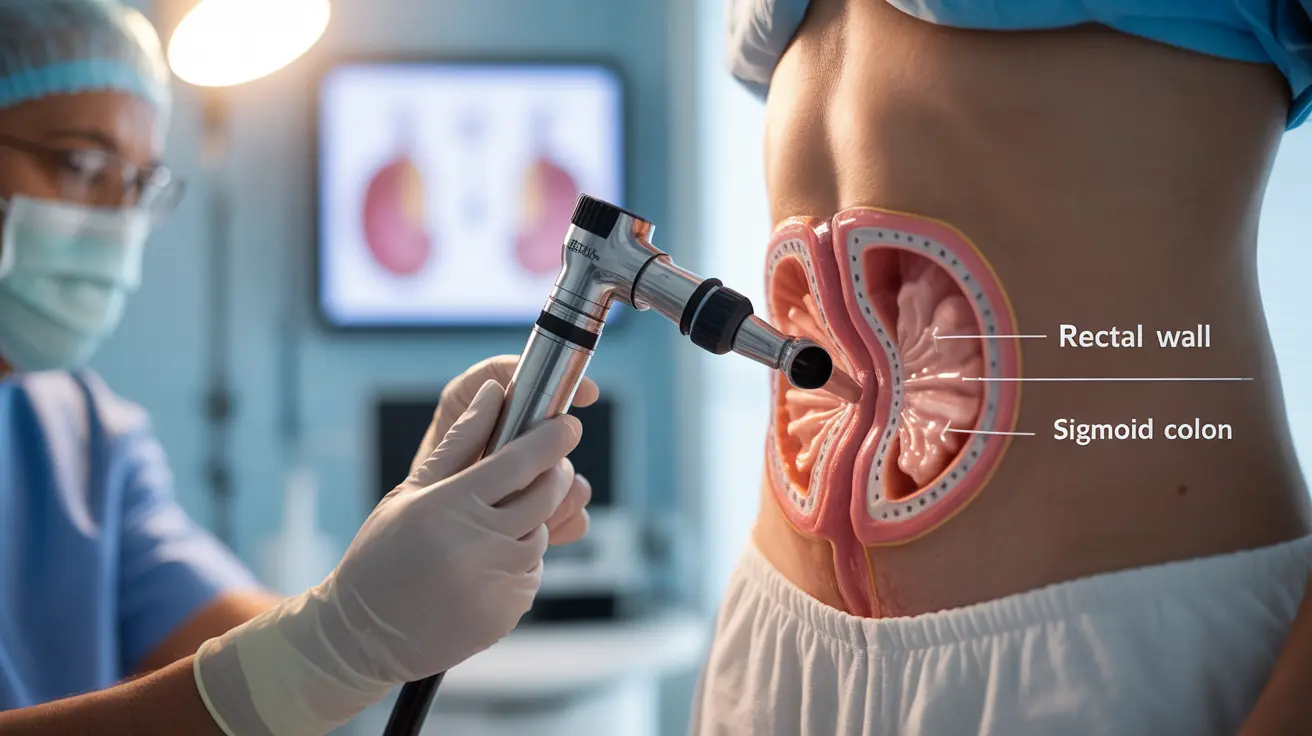A proctoscopy procedure is a crucial diagnostic examination that allows doctors to closely examine the rectum and the lower part of the colon. This medical procedure uses a specialized instrument called a proctoscope, which helps healthcare providers identify and diagnose various conditions affecting the rectum and anal canal.
Whether you're scheduled for a proctoscopy or seeking information about this important diagnostic tool, understanding its purpose, preparation requirements, and what to expect can help ease any concerns you might have about the procedure.
What Is a Proctoscopy Procedure?
A proctoscopy is a minimally invasive examination that uses a hollow tube-like instrument equipped with a light source. This device, called a proctoscope, allows doctors to visually inspect the rectum, anal canal, and the end portion of the large intestine.
Healthcare providers commonly perform this procedure to:
- Investigate rectal bleeding
- Screen for colorectal cancer
- Examine hemorrhoids
- Evaluate rectal pain or discomfort
- Identify sources of infection
- Monitor existing conditions
Preparation Requirements
Proper preparation is essential for a successful proctoscopy procedure. Your healthcare provider will provide specific instructions, which typically include:
- Using an enema or laxative to clear the bowel
- Avoiding food for several hours before the procedure
- Discussing current medications with your doctor
- Arranging transportation if sedation will be used
The Procedure Process
Before the Examination
When you arrive for your proctoscopy procedure, you'll be asked to change into a medical gown. The healthcare team will review your medical history and answer any questions you might have about the examination.
During the Procedure
The actual proctoscopy typically takes about 10-15 minutes and involves:
- Positioning the patient on their side
- Performing a digital rectal examination
- Gentle insertion of the proctoscope
- Visual examination of the rectum and surrounding tissue
- Possible tissue sampling if required
After the Procedure
Following a proctoscopy procedure, most patients can:
- Return to normal activities immediately
- Resume regular eating habits
- Experience mild discomfort that resolves quickly
- Return home the same day
Risks and Considerations
While proctoscopy is generally safe, patients should be aware of potential risks, including:
- Mild discomfort or pressure during the examination
- Light bleeding after the procedure
- Rare instances of tissue damage or infection
- Possible complications if tissue samples are taken
Differences from Other Diagnostic Tests
A proctoscopy procedure differs from other similar examinations in several ways:
- Focuses specifically on the rectum and anal canal
- Generally shorter duration than colonoscopy
- Usually requires less extensive preparation
- Typically performed without sedation
- Examines a smaller area compared to sigmoidoscopy
Frequently Asked Questions
What is a proctoscopy procedure and why is it done?
A proctoscopy procedure is a medical examination that uses a proctoscope to examine the rectum and anal canal. It's performed to diagnose conditions such as hemorrhoids, investigate bleeding, screen for cancer, and evaluate various rectal symptoms.
How do I prepare for a proctoscopy exam?
Preparation typically involves clearing the bowel using an enema or laxative, fasting for several hours before the procedure, and discussing current medications with your healthcare provider. Specific instructions will be provided by your doctor.
What should I expect during and after a proctoscopy procedure?
During the procedure, you'll lie on your side while the doctor examines your rectum using the proctoscope. The examination usually takes 10-15 minutes. Afterward, you can typically resume normal activities immediately, though you might experience mild discomfort.
Are there any risks or side effects associated with a proctoscopy?
While generally safe, potential risks include mild discomfort, light bleeding, and very rarely, tissue damage or infection. Most patients experience minimal side effects that resolve quickly.
How does a proctoscopy differ from other tests like a colonoscopy or sigmoidoscopy?
A proctoscopy examines only the rectum and anal canal, making it shorter and less invasive than a colonoscopy or sigmoidoscopy. It typically requires less preparation and is usually performed without sedation.




